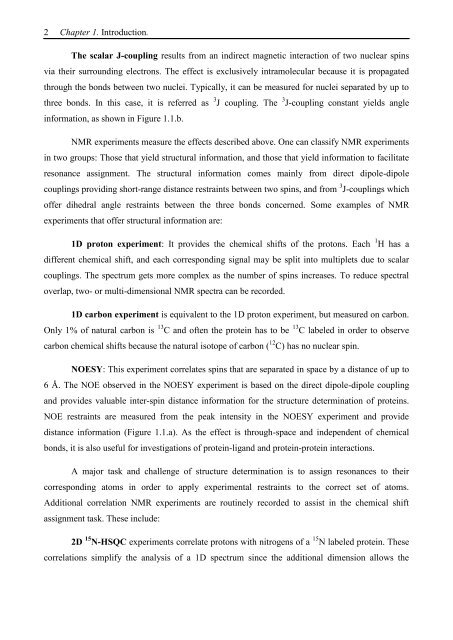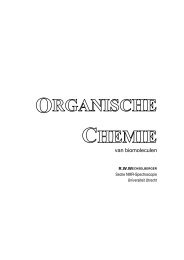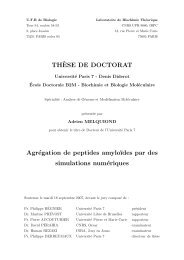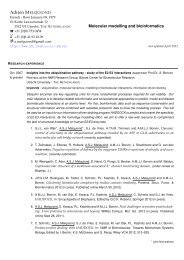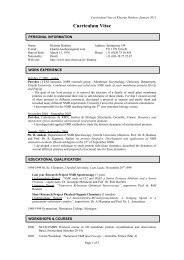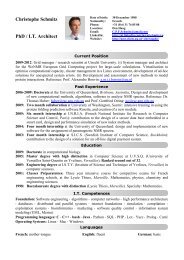Thesis Title: Subtitle - NMR Spectroscopy Research Group
Thesis Title: Subtitle - NMR Spectroscopy Research Group
Thesis Title: Subtitle - NMR Spectroscopy Research Group
Create successful ePaper yourself
Turn your PDF publications into a flip-book with our unique Google optimized e-Paper software.
2 Chapter 1. Introduction.<br />
The scalar J-coupling results from an indirect magnetic interaction of two nuclear spins<br />
via their surrounding electrons. The effect is exclusively intramolecular because it is propagated<br />
through the bonds between two nuclei. Typically, it can be measured for nuclei separated by up to<br />
three bonds. In this case, it is referred as 3 J coupling. The 3 J-coupling constant yields angle<br />
information, as shown in Figure 1.1.b.<br />
<strong>NMR</strong> experiments measure the effects described above. One can classify <strong>NMR</strong> experiments<br />
in two groups: Those that yield structural information, and those that yield information to facilitate<br />
resonance assignment. The structural information comes mainly from direct dipole-dipole<br />
couplings providing short-range distance restraints between two spins, and from 3 J-couplings which<br />
offer dihedral angle restraints between the three bonds concerned. Some examples of <strong>NMR</strong><br />
experiments that offer structural information are:<br />
1D proton experiment: It provides the chemical shifts of the protons. Each 1 H has a<br />
different chemical shift, and each corresponding signal may be split into multiplets due to scalar<br />
couplings. The spectrum gets more complex as the number of spins increases. To reduce spectral<br />
overlap, two- or multi-dimensional <strong>NMR</strong> spectra can be recorded.<br />
1D carbon experiment is equivalent to the 1D proton experiment, but measured on carbon.<br />
Only 1% of natural carbon is 13 C and often the protein has to be 13 C labeled in order to observe<br />
carbon chemical shifts because the natural isotope of carbon ( 12 C) has no nuclear spin.<br />
NOESY: This experiment correlates spins that are separated in space by a distance of up to<br />
6 Å. The NOE observed in the NOESY experiment is based on the direct dipole-dipole coupling<br />
and provides valuable inter-spin distance information for the structure determination of proteins.<br />
NOE restraints are measured from the peak intensity in the NOESY experiment and provide<br />
distance information (Figure 1.1.a). As the effect is through-space and independent of chemical<br />
bonds, it is also useful for investigations of protein-ligand and protein-protein interactions.<br />
A major task and challenge of structure determination is to assign resonances to their<br />
corresponding atoms in order to apply experimental restraints to the correct set of atoms.<br />
Additional correlation <strong>NMR</strong> experiments are routinely recorded to assist in the chemical shift<br />
assignment task. These include:<br />
2D 15 N-HSQC experiments correlate protons with nitrogens of a 15 N labeled protein. These<br />
correlations simplify the analysis of a 1D spectrum since the additional dimension allows the


